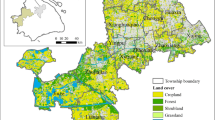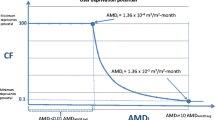Abstract
This paper presents a new leader-follower decision-making framework for the automatic assessment and comparison of different water resources management scenarios and selection of the best one. WEAP (Water Evaluation and Planning) model is used to simulate different management scenarios, which are reasonable from the viewpoint of the leader decision-maker, and evaluate the response of water users (followers). A number of management scenarios are developed for water pricing and allocation to followers in the agricultural, industrial, and fishery sectors. The results are evaluated by a novel sustainability index considering economic performance, water allocation efficiency, and social equity criteria. The economic performance is evaluated by two indices assessing the profit of the basin’s leader and followers. The efficiency of water allocation policies is analyzed by an index using the Evidential Reasoning approach. Social equity is inspected by an index evaluating the distribution of incomes among followers using the Gini coefficient concept. The Gorganrud-Qaresou basin in Iran is used as a case study to demonstrate the applicability and efficiency of the proposed framework and the sustainability index. Sustainable water allocation policies and water prices for agricultural, industrial, and fishery sectors in the basin are the main findings of this paper. The results show that current water tariffs are low, particularly for the agricultural sector, and it could lead to inefficient use of water by followers, which has been the case in many regions in Iran.






Similar content being viewed by others
Data Availability
Some data are available from the corresponding author upon requests.
References
Ahmadi A, Kerachian R, Rahimi R, Skardi MJE (2019) Comparing and combining social network analysis and stakeholder analysis for natural resource governance. Environ Dev 32:100451. https://doi.org/10.1016/j.envdev.2019.07.001
Ashayeri MS, Khaledian MR, Kavoosi-Kalashami M, Rezaei M (2018) The economic value of irrigation water in paddy farms categorized according to mechanization levels in Guilan province, Iran. Agric Water Manage 202:195–201
Ashrafi S, Kerachian R, Pourmoghim P, Behboudian M, Motlaghzadeh K (2022) Evaluating and improving the sustainability of ecosystem services in river basins under climate change. Sci Total Environ 806:150702. https://doi.org/10.1016/j.scitotenv.2021.150702
Chakraei I, Safavi HR, Dandy GC, Golmohammadi MH (2021) Integrated simulation-optimization framework for water allocation based on sustainability of surface water and groundwater resources. J Water Resour Plan Manag 147(3):05021001
Dorfman R (1979) A formula for the Gini coefficient. Rev Econ Stat 61(1):146–149
Emamjomehzadeh O, Kerachian R, Emami-Skardi MJ, Momeni M (2023) Combining urban metabolism and reinforcement learning concepts for sustainable water resources management: A nexus approach. J Environ Manage 329:117046. https://doi.org/10.1016/j.jenvman.2022.117046
Esmaeili A, Vazirzadeh S (2009) Water pricing for agricultural production in the South of Iran. Water Resour Manage 23(5):957–964
Flores-López F, Yates D (2013) A water system model for exploring electric energy alternatives in southeastern US basins. Environ Res Lett 8(3):035041
Gain AK, Mondal MS, Rahman R (2017) From flood control to water management: A journey of Bangladesh towards integrated water resources management. Water 9(1):55
Gascó G, Hermosilla D, Gascó A, Naredo JM (2005) Application of a physical input–output table to evaluate the development and sustainability of continental water resources in Spain. Environ Manage 36(1):59–72
Global Water Partnership Technical Committee (2011) Background paper No. 15. pp 22
Hatamkhani A, Shourian M, Moridi A (2021) Optimal design and operation of a hydropower reservoir plant using a WEAP-based simulation–optimization approach. Water Resour Manage 35(5):1637–1652
IUCN U (1980) World conservation strategy: living resource conservation for sustainable development. International Union for the Conservation of Nature and Natural Resources (IUCN), Gland
Jahanshahi S, Kerachian R (2019) An evidential reasoning-based sustainability index for water resources management. Hydrol Sci J 64(10):1223–1239. https://doi.org/10.1080/02626667.2019.1628347
Johnson W, Williams Q, Kirshen P (1995) Weap: a comprehensive and integrated model of supply and demand. Georgia Institute of Technology
Karamouz M, Mohammadpour P, Mahmoodzadeh D (2017) Assessment of sustainability in water supply-demand considering uncertainties. Water Resour Manage 31(12):3761–3778
Li X, Zhao Y, Shi C, Sha J, Wang ZL, Wang Y (2015) Application of water evaluation and planning (WEAP) model for water resources management strategy estimation in coastal Binhai New Area, China. Ocean Coast Manag 106:97–109
Maghami I (2017) Developing a framework for water trade in a basin scale considering virtual water, M.Sc. thesis, School of Civil Engineering, University of Tehran
Mahab Ghods Consulting Engineering Company (MGCEC) (2010) Water resources and demand management in the Gorganrud-Qaresou river basin, Technical Report (in Persian)
Motlaghzadeh K, Eyni A, Behboudian M, Pourmoghim P, Ashrafi S, Kerachian R, Hipel K (2023) A multi-agent decision-making framework for evaluating water and environmental resources management scenarios under climate change. J Hydrology Sci Total Environ 864:161060. https://doi.org/10.1016/j.scitotenv.2022.161060
Nayak PC, Wardlaw R, Kharya AK (2015) Water balance approach to study the effect of climate change on groundwater storage for Sirhind command area in India. Int J River Basin Manage 13(2):243–261
Rana S, Kelly L (2004) The global water partnership. Addressing challenges of globalization: an independent evaluation of the World Bank’s approach to global programs. Case study. The World Bank, Operations Evaluation Department, Washington, DC
Roozbahani R, Schreider S, Abbasi B (2015) Optimal water allocation through a multi-objective compromise between environmental, social, and economic preferences. Environ Model Softw 64:18–30
Saaty TL (1980) The analytic hierarchy process. McGraw-Hill, New York
Sadeghi A, Khodabakhsh M, Mohayidin G, Motiee N, Nazarihashemi SR (2012) An econometric estimation of irrigation water demand for watermelon in Iran. Int Proc Econ Dev Res 55:91–95
Sahoo S, Dhar A, Debsarkar A, Pradhan B, Alamri AM (2020) Future water use planning by water evaluation and planning system model. Water Resour Manage 34(15):4649–4664
Sandoval-Solis S, McKinney DC, Loucks DP (2011) Sustainability index for water resources planning and management. J Water Resour Plan Manag 137(5):381–390
Sherafatpour Z, Roozbahani A, Hasani Y (2019) Agricultural water allocation by integration of hydro-economic modeling with bayesian networks and random forest approaches. Water Resour Manage 33(7):2277–2299
Sieber J (2006) WEAP water evaluation and planning system. International Congress on Environmental Modelling and Software. Burlington, Vermont, USA
Sohrabi M, Ahani Amineh ZB, Niksokhan MH, Zanjanian H (2022) A framework for optimal water allocation considering water value, strategic management and conflict resolution. Environ Dev Sustain 1–32. https://doi.org/10.1007/s10668-022-02110-2
Sun T, Zhang H, Wang Y, Meng X, Wang C (2010) The application of environmental Gini coefficient (EGC) in allocating wastewater discharge permit: The case study of watershed total mass control in Tianjin, China. Resour Conserv Recycl 54(9):601–608
Walmsley JJ (2002) Framework for measuring sustainable development in catchment systems. Environ Manage 29(2):195–206
Wang XJ, Zhang JY, Shahid S, ElMahdi A, He RM, Wang XG, Ali M (2012) Gini coefficient to assess equity in domestic water supply in the Yellow River. Mitig Adapt Strat Glob Change 17(1):65–75
Wu J, Luo J, Du X, Zhang H, Qin S (2022) Optimizing water allocation in an inter-basin water diversion project with equity-efficiency tradeoff: A bi-level multi-objective programming model under uncertainty. J Clean Prod 371:133606
WWAP U (2003) 1st UN World Water Development Report: Water for people, water for life. United Nations Educational, Scientific and Cultural Organization, Paris, New York and Oxford
Zamanipour M, Saadatpour M, Zahabiyoun MB (2018) Simulation-optimization approach based on meta-model in optimal design of inter-basin water transfer system. Iran-Water Resour Res 14(1):198–215
Zhang CY, Oki T (2023) Water pricing reform for sustainable water resources management in China’s agricultural sector. Agric Water Manage 275:108045
Author information
Authors and Affiliations
Contributions
Sina Jahanshahi: Conceptualization, Methodology, Software, Validation, Formal analysis, Investigation, Resources, Data Curation, Writing Original Draft, Visualization. Reza Kerachian: Supervision, Validation, Writing Review & Editing. Omid Emamjomehzadeh: Writing Review & Editing.
Corresponding author
Ethics declarations
Ethical Approval
Not applicable.
Consent to Participate
Not applicable.
Consent to Publish
Not applicable.
Competing Interests
The authors have no relevant financial or non-financial interests to disclose.
Additional information
Publisher’s Note
Springer Nature remains neutral with regard to jurisdictional claims in published maps and institutional affiliations.
Rights and permissions
Springer Nature or its licensor (e.g. a society or other partner) holds exclusive rights to this article under a publishing agreement with the author(s) or other rightsholder(s); author self-archiving of the accepted manuscript version of this article is solely governed by the terms of such publishing agreement and applicable law.
About this article
Cite this article
Jahanshahi, S., Kerachian, R. & Emamjomehzadeh, O. A Leader-Follower Framework for Sustainable Water Pricing and Allocation. Water Resour Manage 37, 1257–1274 (2023). https://doi.org/10.1007/s11269-023-03428-w
Received:
Accepted:
Published:
Issue Date:
DOI: https://doi.org/10.1007/s11269-023-03428-w




